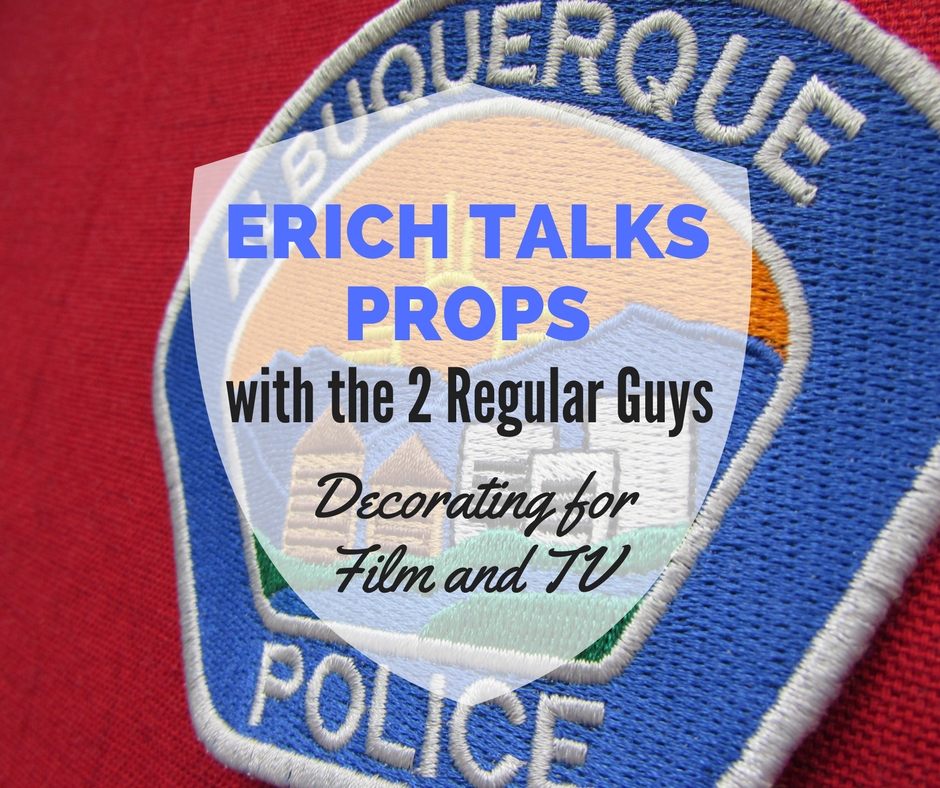
What you may not know about the little Albuquerque-based company for which I work, is that we have done a ton of decoration for the flourishing local film and TV business in New Mexico. From Albuquerque’s most recognizable shows, Breaking Bad and Better Call Saul, to AMC’s Preacher, to NBC’s the Night Shift, to countless movie productions ranging in scope from indie to blockbuster, we’ve created everything from wrap-gifts to on-screen props.
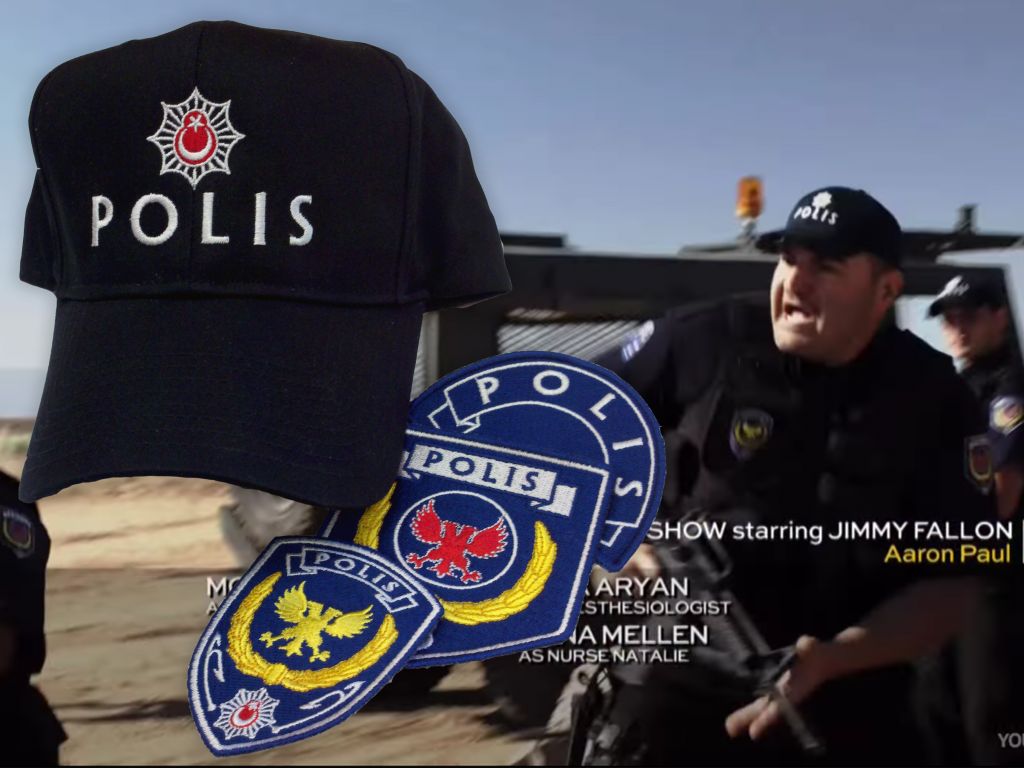
You may have seen my patches in such fine shows as NBC’s The Night Shift . . .
Aaron and Terry at the 2 Regular Guys podcast had me in recently to talk about movie prop production, and you can listen to the podcast where I talk all about what it takes to do this kind of work here; if you’d rather read all about it; my commentary and summaries are just below the player.
It’s not (just) technique.
In my opinion, the technical process of creating pieces for film isn’t the most interesting thing we discussed. The methods of production are the same as they are for almost any job; there’s no particular difference in the execution of the pieces themselves. My chief product for film comes in the form of patch sets for imagined officials and companies; frankly, a patch, is a patch, is a patch; though creativity is in play, they are executed in an identical way to any small-run patch job.
What’s interesting is the how and why we became the go-to prop people. The ability we are known for by our film customers isn’t specific to working for their industry; rather it’s something that benefits all decorating jobs- We are known for our ability to think on our feet and solve problems creatively. Certainly, the fast pace and sudden requirements of film and TV customers do make the work pressing, but working faster isn’t as important as coming up with viable solutions that take the schedule and the needs of any given job into consideration and create a usable product, even when the customer’s original requests aren’t possible or reasonable.
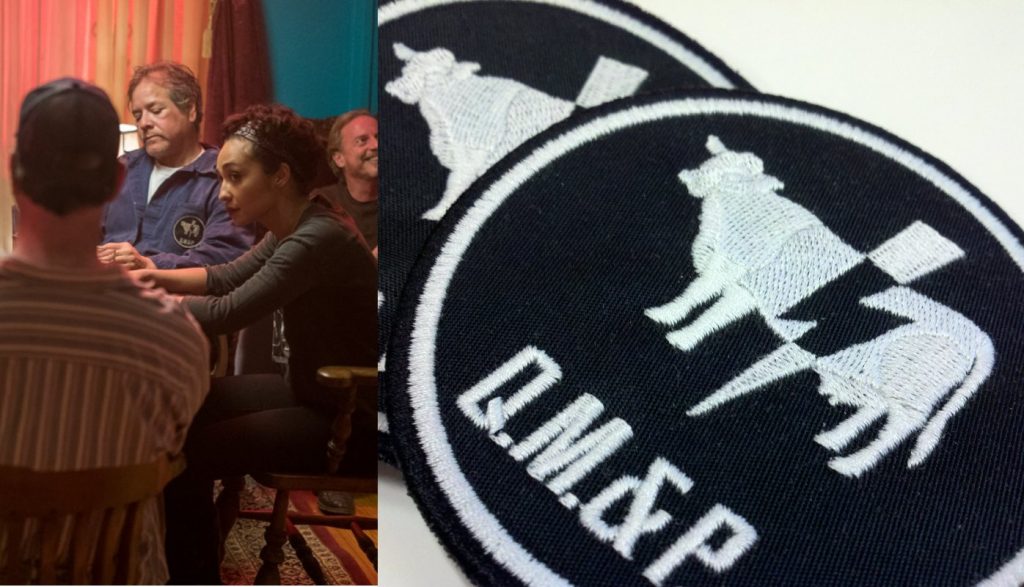
In truth, these uniform patches for AMC’s Preacher are no different than those I’d make for any customer.
Showing your Work
What may be the most critical take-away from the interview is the insistence on sharing and showing one’s work publicly. As often as I’m asked how I physically make prop pieces, I’m equally likely to field questions about how I ‘broke in’ to the business of working with film and TV customers. Like many other opportunities in my career, it ultimately comes down to a simple truth; the work you share and show is the work you’ll be asked to do. While you might think I started this work by cold-calling wardrobe departments or production houses to get my foot in the door, you couldn’t be further from the truth.
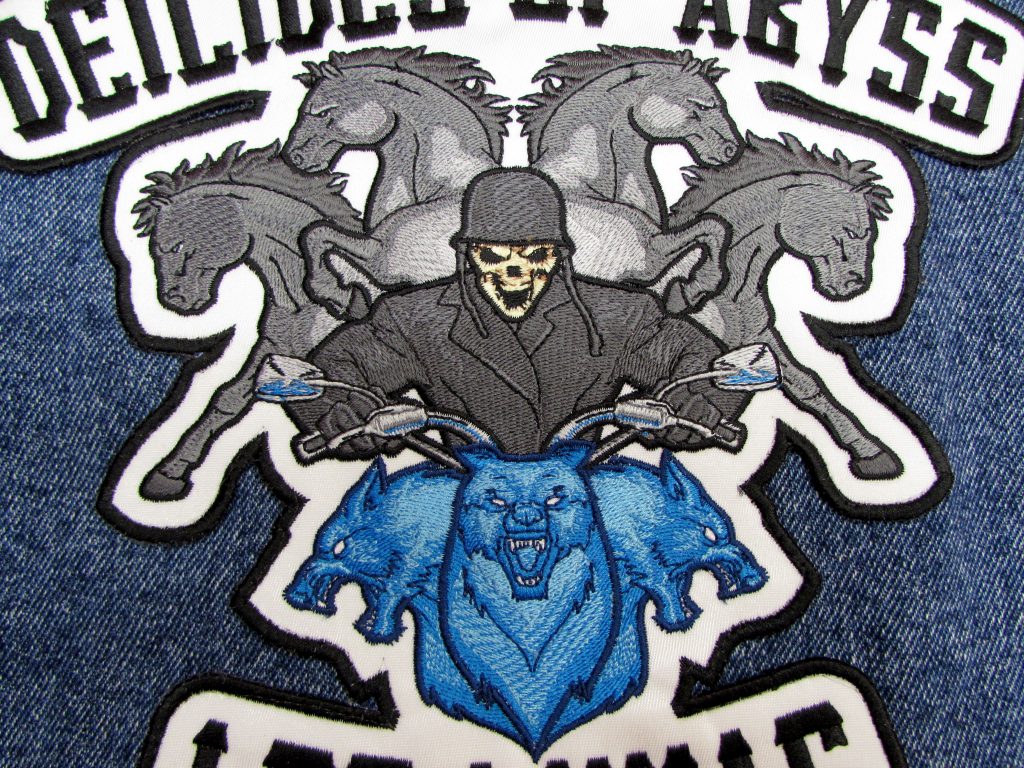
It’s sharing work like this that facilitated the work we did for film.
The entire yield of these jobs stems from a small run of blog posts. After creating some impressive jacket-back patches for motorcycle clubs, I decided to share them; I wrote about custom patch-making, and once I realized that I was seeing more and more traffic coming from people interested in patches, I did a follow-up piece about uniform patches and ways to implement them. These posts made my shop a natural search result for patches in my area. With so many of the necessary prop embroideries coming in the form of uniform patch sets, my shop became known as the natural choice, particularly after early successes from those companies who had found us through the posts turned into referrals and spread via the word-of-mouth network of film professionals. The moral of the story should be both that you never know what thing you’ve shared may some day become a business opportunity, and that you should think about what you share if you are trying to direct that next opportunity.
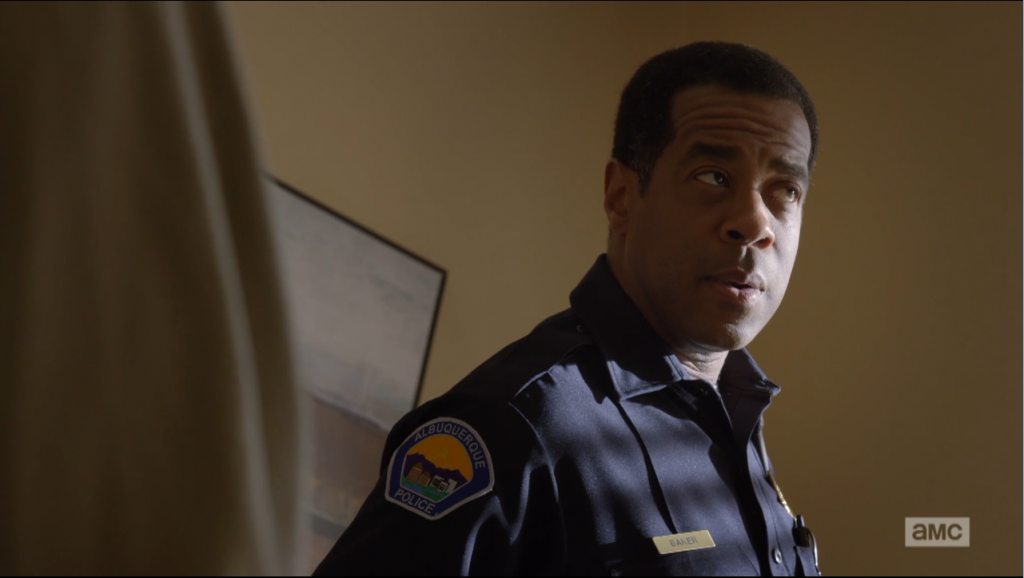
Better Call Saul S2-E2, starring, among others, my faux Albuquerque Police shoulder patches.
If you’d like to hear more from Aaron, Terry, and myself, I implore you to go give the episode a listen, but if you don’t have the time, here’s one final look at the highlights:
What does it take to work on film and TV projects?
Creative Problem Solving
You must be able to redesign, rework, and even shift decoration methods on the fly to get product in hand, on-time, every time. You have to be a consultant; they need a result, and if you know how to get that result and you can explain things clearly and quickly, they’ll trust your skills and keep coming back.
Responsiveness
you must be accessible, give quick feedback, and have ready answers. You must answer their calls, emails, and texts, and be ready to make things happen.
Skill and Knowledge
In truth, you have to be able to create a quality product reliably, as there’s not always time for editing, trials, or second attempts. Your fundamentals must be solid.
How do you break in to the business?
Show your work
Share, show, and educate on your work. What you show, potential customers find, and what they see, they’ll want. Show the work you want to do. You never know what reach a piece will have until you share it; unrelated industries sometimes have very similar needs.
Say Yes (or ‘no, but’)
Take on jobs that are slightly outside of your comfort zone and get them done. Moreover, if you are asked to do something that just can’t be done, don’t simply deny the customer; always provide a reasonable option and be ready to educate.
The bottom line is this; if you know how to execute, how to solve problems, and how to show up on time and ready to rush, you will have everything you need to work on props; all you need now is to show people the work that will lead them to you.








LEAVE A COMMENT